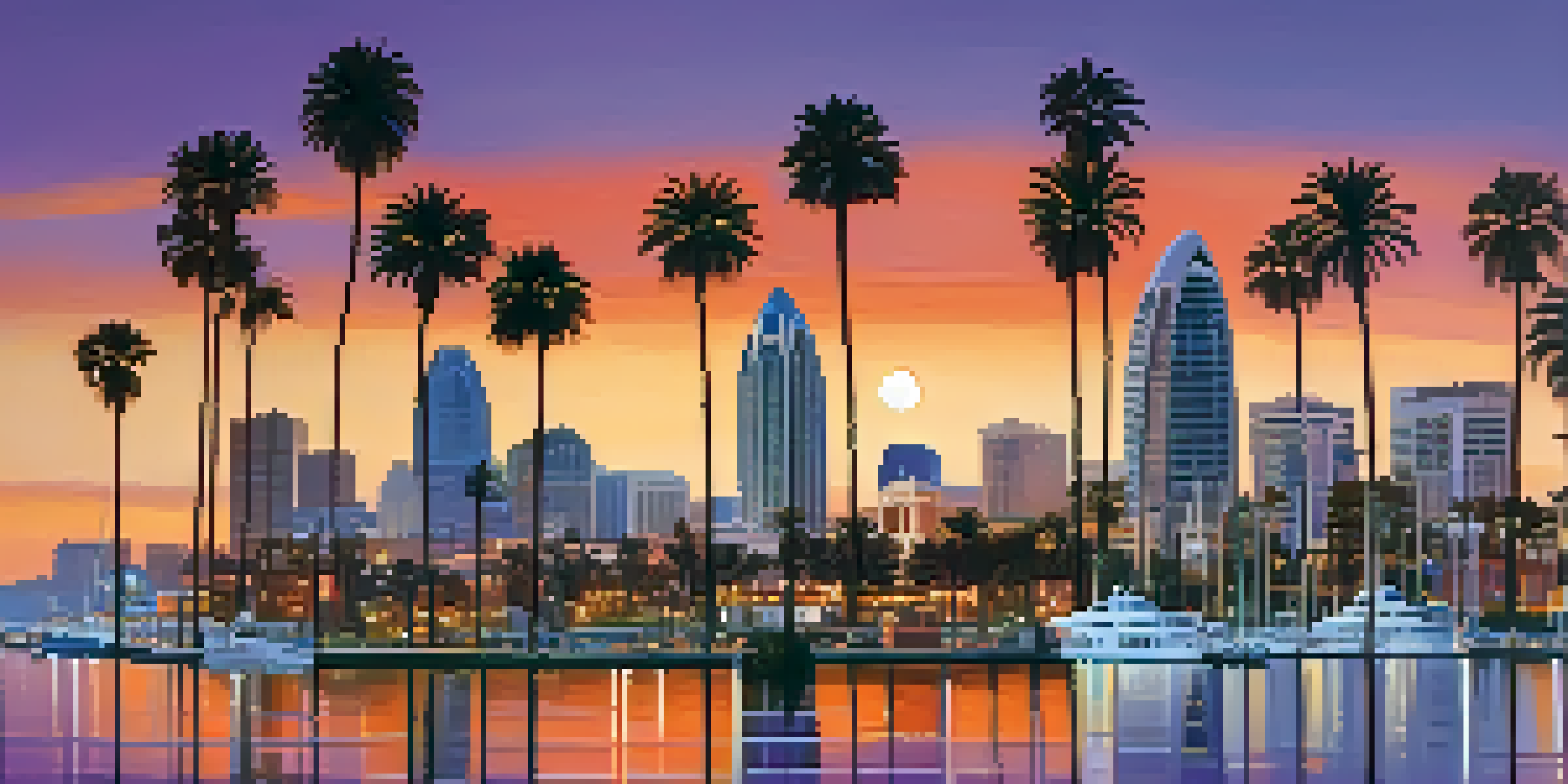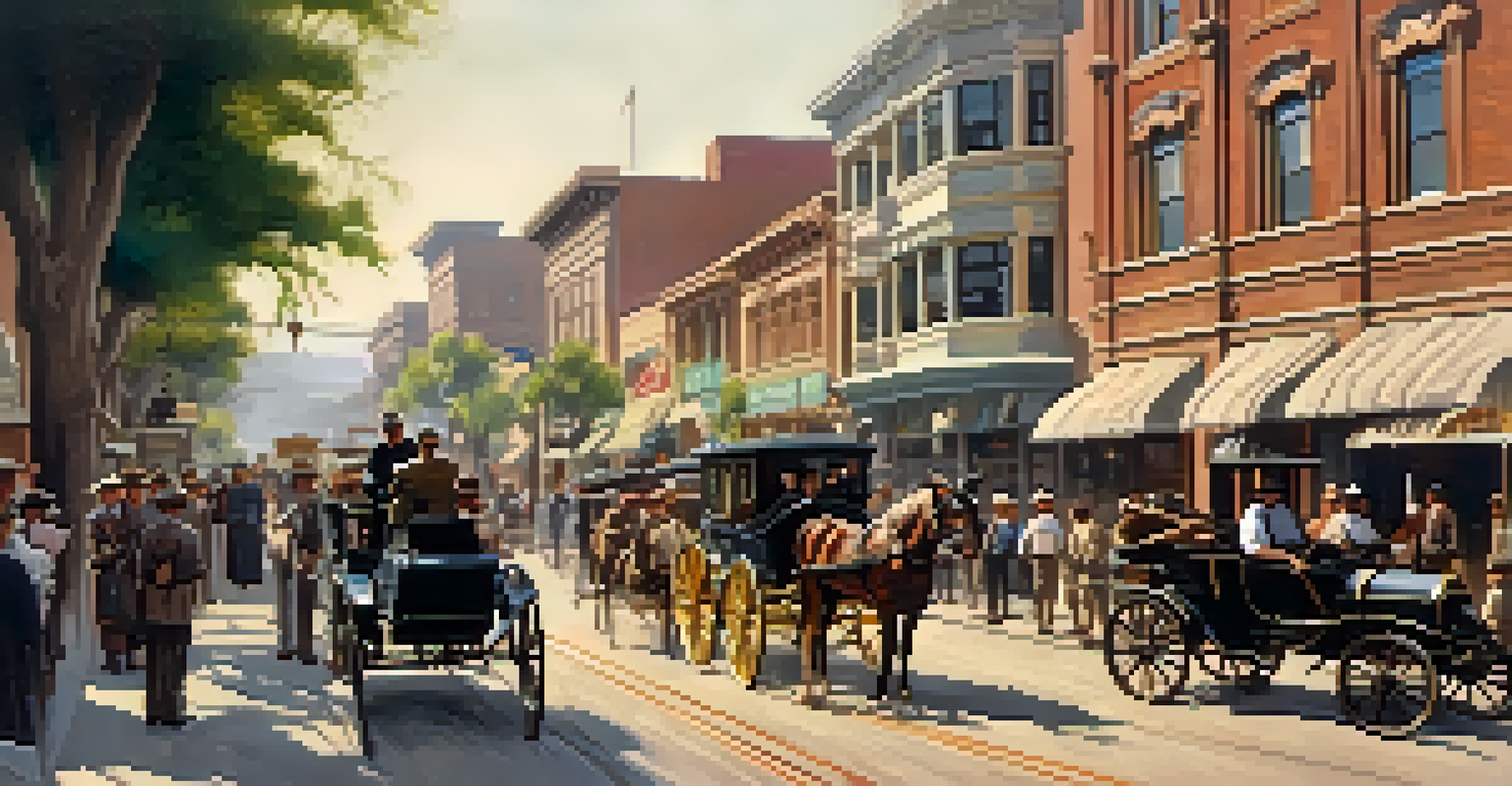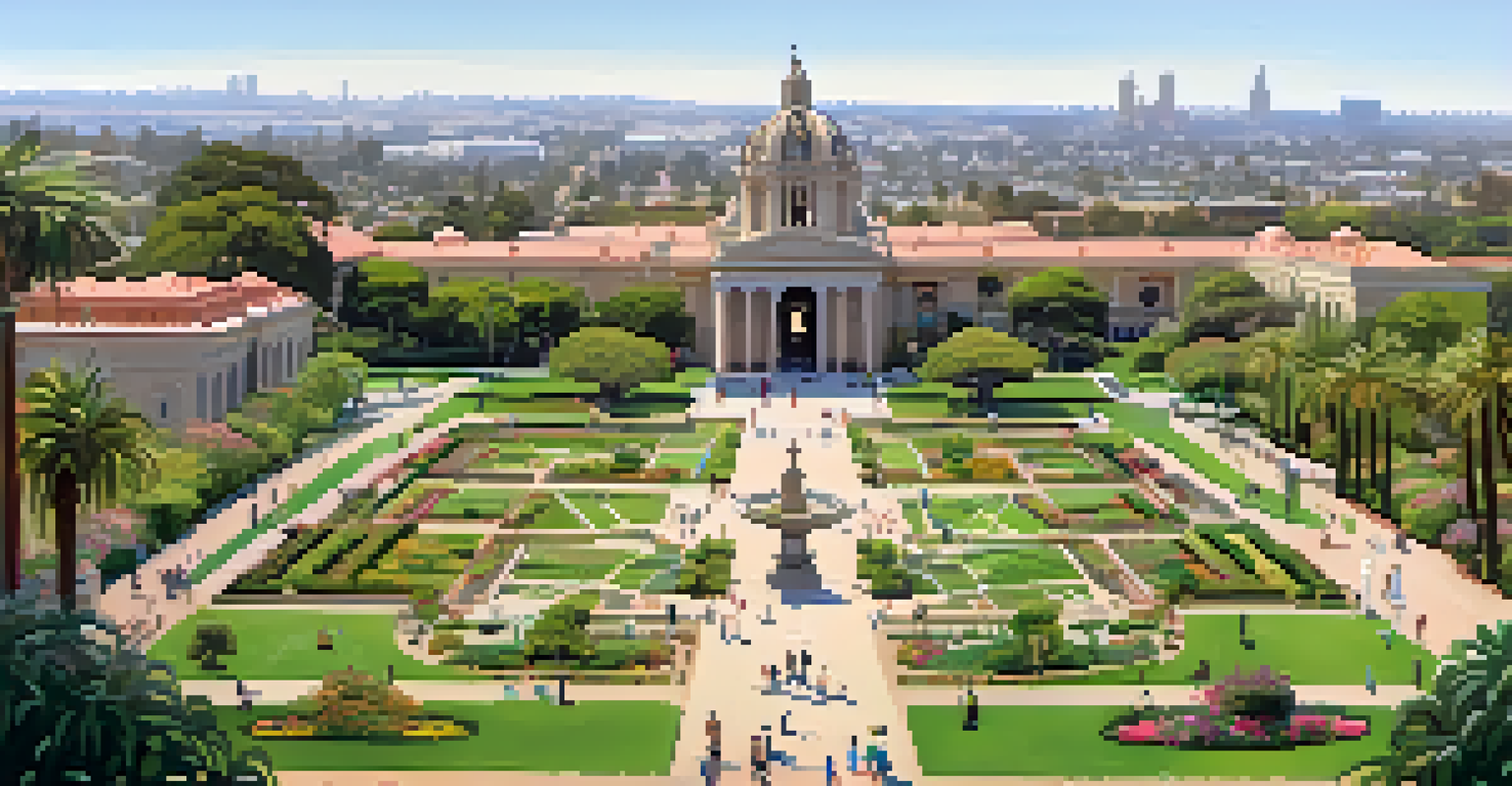The Birth of San Diego: Urban Planning in the Early 1900s

San Diego's Transformation: From Military Post to Urban Hub
In the late 19th century, San Diego was primarily a military outpost, with a small population and limited infrastructure. However, as the city began to emerge as a key player in California’s development, a vision for a more structured urban environment became essential. The arrival of the railroad in 1885 catalyzed this transformation, connecting San Diego to the rest of the country and encouraging population growth.
San Diego is the kind of place where you can go from the beach to the mountains in a single day, and that diversity is reflected in its urban planning.
The influx of settlers and businesses prompted city planners to rethink the layout and functionality of San Diego. The planning efforts were not just about accommodating more people but also about creating a vibrant community that could thrive economically and socially. This period marked the beginning of a focused approach to urban planning, where the needs of residents and businesses started to shape the city’s future.
As San Diego blossomed, it began to adopt elements from other successful cities, blending them into its unique character. The early 1900s set the stage for a significant transformation, as community leaders and planners worked tirelessly to establish a framework that balanced growth with livability.
The Influence of the 1915 Panama-California Exposition
The 1915 Panama-California Exposition was a turning point for San Diego, showcasing the city’s potential and attracting national attention. Held to celebrate the opening of the Panama Canal, the exposition not only highlighted San Diego’s natural beauty but also underscored its growing status as an urban center. The event brought with it significant investments and developments in infrastructure, which would influence urban planning for decades.

Many of the exposition’s structures were designed with the future in mind, incorporating elements of the Spanish Colonial Revival style that would become synonymous with San Diego. This architectural choice not only beautified the city but also created a cohesive aesthetic that residents could rally around. The exposition effectively put San Diego on the map, leading to a surge in tourism and new residents eager to be part of the city’s evolution.
San Diego's Urban Planning Evolution
San Diego's transformation from a military outpost to a vibrant urban hub was driven by strategic urban planning and infrastructure development.
The legacy of the exposition was profound, as it spurred further development and urban planning initiatives. City leaders recognized the importance of creating spaces that fostered community engagement and economic activity, leading to a blueprint for future projects aimed at enhancing the quality of life for San Diego’s inhabitants.
The Role of Parks and Public Spaces in Urban Planning
As urban planners in the early 1900s sought to create a livable city, the inclusion of parks and public spaces became paramount. Recognizing that green spaces contribute to the overall well-being of residents, San Diego's leaders prioritized the establishment of parks that would serve as communal gathering places. Balboa Park, in particular, emerged as a centerpiece for recreation and cultural activities, fostering community spirit.
The beauty of San Diego lies not just in its stunning landscapes but in the thoughtful design of its urban spaces that foster community and connection.
Parks like Balboa not only provided a respite from urban life but also became venues for social and cultural events. The planning of these spaces was deliberate, aimed at encouraging civic pride and community interaction. Planners understood that parks were essential not just for aesthetics but also for the health and happiness of the growing population.
The emphasis on parks reflected a broader trend in urban planning during this era, where the integration of natural elements into city design became a priority. This focus on green spaces has continued to influence San Diego’s urban landscape, helping to maintain a balance between development and nature that many residents cherish today.
Transportation Innovations Shaping San Diego's Urban Layout
In the early 1900s, the development of transportation infrastructure was crucial for San Diego’s urban planning. The advent of streetcars and the expansion of roads allowed for greater mobility and connectivity across the city. This transportation network not only facilitated the movement of people but also played a pivotal role in shaping neighborhoods and commercial districts.
City planners recognized that efficient transportation systems could enhance economic growth and improve access to jobs and services. The streetcar lines, in particular, encouraged suburban development, as residents could easily commute to downtown San Diego for work or leisure. This accessibility transformed the city’s landscape, leading to a more dispersed urban environment.
Parks Enhance Community Life
The inclusion of parks and public spaces, such as Balboa Park, played a crucial role in fostering community engagement and enhancing residents' quality of life.
As San Diego continued to grow, the focus on transportation innovations remained a priority for planners. The lessons learned during this period laid the groundwork for future development, ensuring that transportation would always be a key consideration in urban planning efforts.
Zoning Laws: Balancing Growth and Community Needs
With rapid growth came the need for regulations that would guide development in San Diego. The introduction of zoning laws in the early 1900s was a significant step toward managing land use and ensuring that the city could accommodate both residential and commercial needs. These laws aimed to promote orderly growth while protecting the interests of existing communities.
Zoning regulations helped establish distinct areas for different purposes, such as residential neighborhoods, commercial districts, and industrial zones. This careful planning was essential for maintaining the character of various neighborhoods and preventing conflicts between incompatible land uses. By delineating these areas, city planners sought to create a harmonious urban environment that fostered community interaction.
The implementation of zoning laws also addressed concerns about public health and safety, ensuring that residential areas were shielded from industrial pollution. This balance between growth and community needs became a cornerstone of San Diego’s urban planning philosophy, influencing future developments and the city's overall trajectory.
The Impact of the Great Depression on Urban Planning
The Great Depression brought significant challenges to San Diego’s urban planning efforts, forcing city leaders to adapt their strategies. Economic hardships resulted in halted projects and limited funding, leading to a reevaluation of priorities in urban development. However, this period also sparked innovative approaches to revitalizing the economy through thoughtful planning.
City planners recognized that investing in public works projects could provide much-needed jobs while improving infrastructure. Initiatives like the construction of parks, roads, and public buildings not only enhanced the city’s appeal but also laid the groundwork for future growth. This focus on community improvements helped to sustain morale during tough economic times.
Zoning Laws Shape City Growth
The introduction of zoning laws in the early 1900s was essential for managing land use and balancing the needs of residential and commercial areas.
Despite the challenges, the Great Depression underscored the importance of resilience in urban planning. Planners learned valuable lessons about adaptability and the need to focus on community-oriented projects that could benefit residents in both the short and long term.
Legacy of Early 1900s Urban Planning in Modern San Diego
The urban planning initiatives of the early 1900s have left an indelible mark on modern San Diego. Many of the foundational elements established during this period, such as green spaces, transportation networks, and zoning regulations, continue to shape the city’s development today. Residents enjoy a vibrant urban environment that reflects the careful planning of their predecessors.
The emphasis on parks, public spaces, and community engagement remains a core value in San Diego’s urban planning philosophy. As the city continues to grow and evolve, the principles established in the early 1900s serve as a guiding framework for new projects. This legacy fosters a sense of connection among residents and ensures that the city remains a desirable place to live.

Looking ahead, San Diego’s planners face new challenges, including population growth and environmental sustainability. However, the lessons learned from the past provide a strong foundation upon which to build a thriving urban future that honors the city’s rich history while embracing innovation.